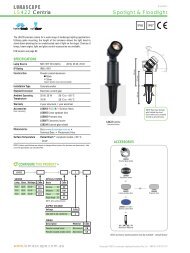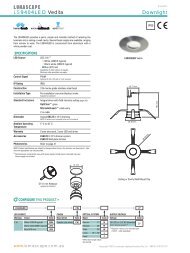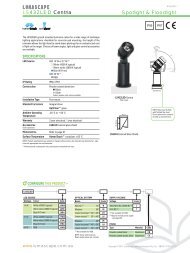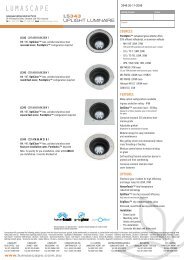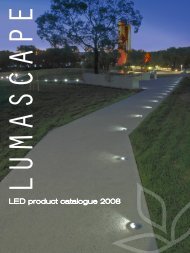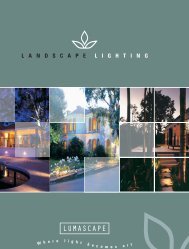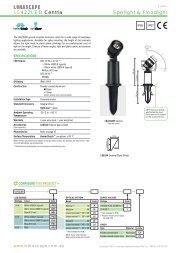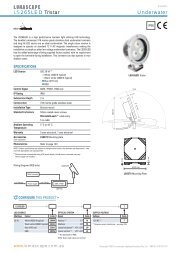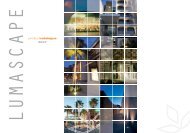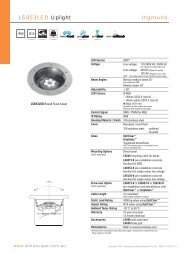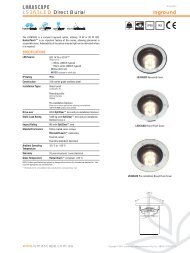Schréder - Lumascape
Schréder - Lumascape
Schréder - Lumascape
Create successful ePaper yourself
Turn your PDF publications into a flip-book with our unique Google optimized e-Paper software.
Unwanted light is characterised by several sources of<br />
pollution: dazzling light, invasive light and a halo of<br />
light, which indicates the combination of two phenomena:<br />
light emitted directed by the luminaire towards<br />
the sky - light shining directly upwards - and light<br />
reflected by the surface to be lit - light reflecting<br />
upwards.<br />
Invasive light is an excess of light directed towards<br />
areas where it is not desirable.<br />
directly by the luminaire and indirectly by the<br />
reflection on the lit up roads and their<br />
surrounding area.<br />
86,000 calculations to avoid systematic use<br />
In total, they made more than 86,000<br />
photometric calculations. They were in<br />
particular able to demonstrate the variations<br />
in the upward luminous flux depending on<br />
the road surface and its surrounding area.<br />
To reduce the dispersion of the luminous<br />
flux towards the sky, they recommended<br />
optimising the photometric performance<br />
and the location of the luminaires. They<br />
emphasised that the luminaires equipped<br />
with a flat protector are not systematically<br />
the most suitable as regards light pollution.<br />
Those equipped with a slightly curved<br />
protector are better in some cases.<br />
Consequently, no permanent obligation to<br />
use flat protectors!<br />
The secrets of a good luminaire<br />
In fact, we always come back to the number<br />
one question: optimising the optics. It is only<br />
by endeavouring to do so that we will be able<br />
to successfully prevent light pollution. The<br />
research carried out by <strong>Schréder</strong> has<br />
demonstrated the following: a good luminaire<br />
is one that manages to optimally use the<br />
luminous flux emitted by the lamp in order to<br />
precisely focus on the area to be lit.<br />
Luminaires designed for “precise lighting”<br />
should therefore be used.<br />
Precise lighting, against unwanted light<br />
and for sustainable development<br />
However, these “clean” luminaires not only<br />
make it possible to prevent unwanted light,<br />
they also allow for a reduction in the number<br />
of luminaires and the power of the lamps.<br />
The result: significant energy savings, which<br />
remains a major concern for sustainable<br />
development issues.<br />
Keyword: efficiency<br />
Light shining directly upwards<br />
Useful light<br />
Potentially dazzling light<br />
Surface to be lit<br />
Efficiency is the keyword to come out of this<br />
study. It is also the objective that <strong>Schréder</strong><br />
has set itself within the framework of its<br />
Research & Development activities, and it is<br />
an objective we will undoubtedly achieve<br />
thanks to our photometric developments and<br />
our research department. It is these<br />
departments and this know-how that make a<br />
difference with regard to photometric<br />
FEATURE<br />
LIGHT POLLUTION<br />
Light reflecting upwards<br />
Invasive light<br />
Seen from the sky, the phenomena likely to cause unwanted light are clearly concentrated in geographical areas with<br />
the highest level of economic and industrial development.<br />
efficiency. More than ever before, they are<br />
responsible for <strong>Schréder</strong>’s position as THE<br />
reference in lighting.<br />
<strong>Schréder</strong> N°31 • 2005 I 5




